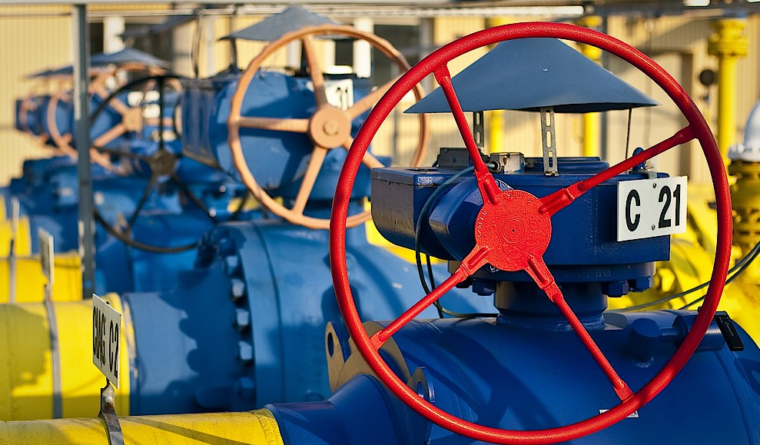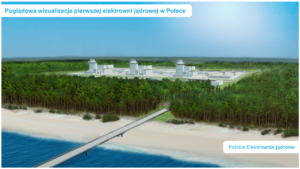The construction of the Baltic Pipe on the Baltic Sea has taken off, but if Poland wants to remain independent of Gazprom, it needs to invest in diversification projects. However, in view of the stricter climate policy such plans may be a lot more difficult to finance. In 2023 Warsaw may need either from Russia or some other source between 2.1 and 3.8 bcm of gas, and in the long run – an FSRU and perhaps even Baltic Pipe 2 – Wojciech Jakóbik, editor in chief at BiznesAlert.pl, writes.
Baltic Pipe takes off
On the 5th of May the ship Castoro 1 that belongs to Italy’s Saipem will set out from the port of Rotterdam to build the offshore section of the Baltic Pipe on the Baltic Sea. The inauguration of works at the Baltic section of the pipe, which will carry Norwegian gas to Denmark and Poland, will be accompanied by speeches of politicians, including from Italy. Among the guests will be Piotr Naimski, the Government Plenipotentiary for Strategic Enery Infrastructure, and the CEO of Poland’s gas TSO Gaz-System. Poles are hoping that the offshore section will be done and dusted by the end of 2021. The entire pipeline is to be ready by October 2022, and will allow Poland to replace its long-term gas contract with Gazprom with Norwegian gas from deposits that are under the control of Poland’s PGNiG and gas from producers from the Norwegian shelf. As part of the so-called Yamal contract Poland will buy up to 10.2 bcm of gas a year until the end of 2022. As of the end of the next year, Baltic Pipe will transmit up to 10 bcm a year.
The National Ten-Year Development Plan (KDPR) for the Polish Gas Transmission System for the Years 2022-2031, which will be in consultations until 12 May 2021, says that within a decade the demand for gas in Poland will increase by as much as 50 percent, while peak demand will soar even by 100 percent in comparison to the records set in 2019-2021. If already today Poland needs about 20 bcm of gas a year, in 2030 that amount may go up to 30 bcm, mostly due to the energy transition that will run on gas in the 2020s, since nuclear power will be available as late as in the 2030s. It will be also necessary to make sure we have the ability to maintain independence from various gas sources in line with the EU N-1 standard, which says that gas infrastructure has to be capable of satisfying the entire demand in case one source becomes unavailable. Another piece of legislation that has to be considered is the diversification regulation, which limits the maximum supply from one source to 70 percent between 2017 and 2020 and to 33 percent for 2023-2026. This pertains to deliveries from one source understood as an entry point into Poland’s transmission system, such as connections with non-EU states, as well as onshore and offshore supply monitored according to the place of loading.
It is worth taking stock of the sources that will be available in early 2023, when the Yamal contract will be no longer in force.
- The Baltic Pipe will cover up to 33 percent of deliveries to Poland, so its entire capacity of 10 bcm a year will be used if the demand is at about 30 bcm. An annual demand of about 20 bcm in 2023 will make it possible to import 6.6 bcm a year via the Baltic Pipe, provided that PGNiG will book the capacity at 8.2 bcm a year. This is a rough calculation, because in the KDPR Gaz-System estimated the domestic demand in 2023 at 19.3 bcm. A spike in gas demand is to occur after 2024 when new gas power plants will be opened.
- Another gas source available to Poles are LNG deliveries. By December 2023 the capacity of the LNG terminal in Świnoujście will be expanded from 5 to 8.3 bcm a year, so in 2024 it will be ready to process more gas. In 2023 the available capacity will still be at 5 bcm, and the supply will be additionally diversified by the fact that PGNiG has signed fixed-term contracts with a few companies from the USA and one from Qatar. It has not been decided yet whether the Floating Storage Regasification Unit in the Gdańsk Bay will be constructed, but it could provide between 4.5 and 8.2 bcm a year between 2026 and 2027.
- Additionally, Poland will also have interconnections with its neighbors. One of those is the Poland-Lithuania Gas Pipeline (GIPL) that will be ready by July 2022. The pipe will allow Poles to tap into the FSRU in Klaipeda, whose only user until 2024 is PGNiG, which will allow the company to import gas via the gas pipeline and tank trucks. The total capacity of the FSRU in Lithuania is 4 bcm a year, out of which Poles could use 1.9 bcm as that will be the available capacity of the GIPL in the southern direction, and it will be in accordance with the diversification regulation. This gas will fuel, among others, the Ostrołęka C power plant that is to be constructed in north-eastern Poland. Another project is the Poland-Slovakia gas pipeline with a capacity in the norther direction of 5.7 bcm a year. The pipe is to be ready in 2021, and its entire capacity is to be used in line with the regulation in 2023. The Poland-Czechia gas pipeline is yet another gas import source with the annual capacity of 0.5 bcm which will be expanded to 1 bcm in 2027. This investment will be pursued instead of the Stork II gas link (6.5 bcm at the entry to the Polish gas system) which was abandoned by Net4Gas. Next in line is the virtual reverse flow on the Yamal gas pipeline, which gives uninterrupted access to 5.5 bcm and interrupeted access to 2.7 bcm at 8.2 bcm a year. The supply from this direction will be in line with the diversification regulation. In 2023 the modernization of the Yamal gas pipeline will not be ready yet. The new adjustment will make it possible to distribute gas from the Baltic Pipe and LNG to the north-east Poland, a possibility I wrote about in a different article.
Will Poland sign a new deal with Gazprom?
All of this means Poland will not need to sign a contract directly with Gazprom to cover its gas demand in 2023. However, it will be able to reach for this solution if it turns out it is the most economically beneficial option. However, European providers will also be at hand in Germany, Czechia and Slovakia. Poland hasn’t had any political problems in the past with them, which is not the case with Russia. The ability to freely choose a supplier may make the relations with Gazprom purely business-like. The fact that Russia cooperated after PGNiG had won the dispute at the arbitration court, and carried out the sentence without any problems may be a good omen in this context.
In 2023 the domestic production of gas in Poland will be at 4 bcm, 6.6-8.2 bcm will come from Baltic Pipe and there will be 5 bcm of LNG. This means, Warsaw will be able to provide between 15.6 and 17.2 bcm via the entry points without the eastern border. The rest, which is about 2.1-3.8 bcm will have to come from the remaining system interconnections. So, it should be expected that Poles will not sign a new contract with Russians, and will instead choose a European supplier, or a short- term contract for 2024-2027 with Gazprom for a small volume, similar to other agreements signed by this company in Europe today.
Diversification continues
According to the report on the monitoring of the security of supply of gaseous fuels from July 2020 „the diversification investments pursued by the transmission system operator will not only play a key role in meeting the growing demand for gaseous fuels, but, as the amount of power generated in gas-fuelled power plants will grow, they will also contribute more to ensuring a stable power supply.” „The most important element of expanding the infrastructure necessary to diversify natural gas supply to Poland is the Baltic Pipe and increasing the capacity of available regasification capability through the construction of the LNG terminal in Świnoujście, and the construction of a floating regasification terminal in the Gdańsk Bay,” we read. The increase in gas demand in Poland coupled with the goal to maintain the independence of supply from eastern sources, will then create the necessity to expand the transmission infrastructure, and then adapt it to the EU climate policy regulations.
If in 2030 the demand does reach 30 bcm a year, it will be necessary to import roughly up to 10 bcm via the Baltic Pipe, 16.4 bcm of LNG (maximum capacity of the terminal and the FSRU from various suppliers) and 3.6 bcm via the interconnections at the border. This entails billion-zloty investments in new transmission capacities, which will make it possible to not buy gas from the east, or purchase it without being forced. The first option is the FSRU and the second is Baltic Pipe 2 that will make it possible to decrease the dependence on liquefied gas. Another wave of costly investments will be necessary to adapt the gas infrastructure to transport renewable gases such as biomethane and hydrogen. This has to be done in order to maintain the EU support and a business justification for these gas pipelines after 2050, so that they do not turn into stranded assets once the EU becomes climate neutral. The government should protect those regulations that allow the financing of the modernization of the infrastructure in view of the mounting discussions on allowing EU subsidies to be spent only on projects not related to fossil fuels. So in theory, adapting gas pipelines so that they can transmit renewable gases may not be on the table in the future, as exemplified by the initiative of some European states on the TEN-E regulations, we wrote about on BiznesAlert.pl. If changing the regulations doesn’t go well for Poland, the mentioned FSRU may not be added to the Project of Common Interest lists, which means it will not receive EU subsidies from the Connecting Europe Facility. However, in 2019 this investment did acquire this status already.









